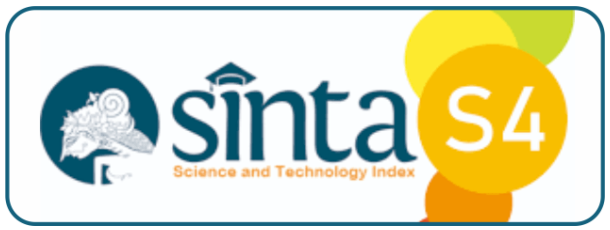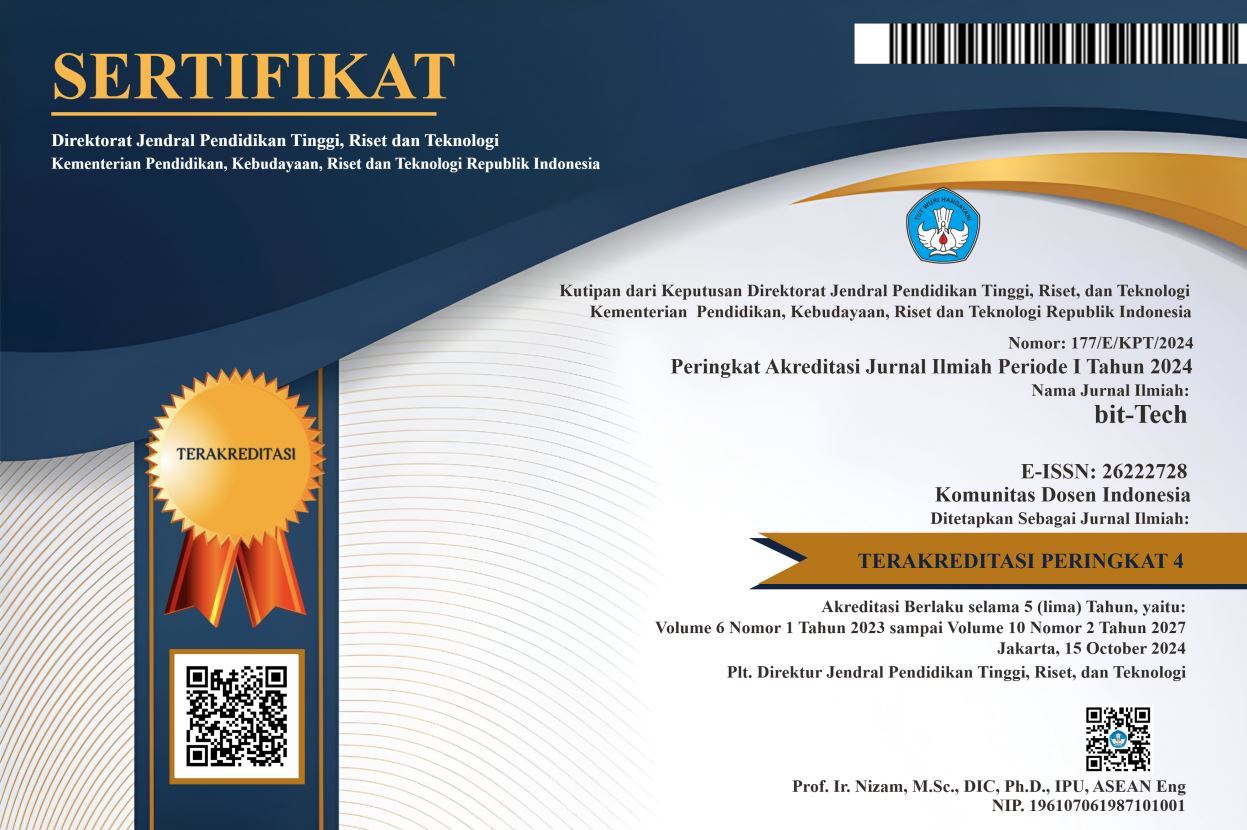Plant Based Watering System Internet of Things Arduino and Monitoring with Telegram
DOI:
https://doi.org/10.32877/bt.v6i3.1094
Keywords:
Arduino IDE, Internet of Things, Monitoring, Plant Watering System , Telegram
Abstract
Watering plants is very important if plants are to grow healthy and fertile. Many plant owners do not water their plants because they are busy at work and busy activities outside the home. Watering plants in the form of a system that can work automatically is an integrated design that can help human work. The aim of this research is the application of the Internet of Things and Telegram in watering plants, as well as creating an application for monitoring plant growth and care using the Telegram application. The method used in this research is the internet of things. Internet of Things is a concept where certain objects have the ability to transfer data via a WiFi network, so this process does not require human-to-human or human-to-computer interaction. Everything is run automatically with the program. The Internet of Things is usually called LoT and this technology has developed rapidly starting from wireless technology, micro-electromechanical systems (MEMS) and the internet. The results of this research are that by using an automatic plant watering system based on the internet of things, plants can remain well maintained and the development of the plants can also be monitored via telegram. The results of the questionnaire respondents' answers were on average above 50% in choosing the answer "Strongly Agree". These results show that this application is easy to use and meets user needs.
Downloads
References
R. Zhang, “Get Started with ESP32.” [Online]. Available: https://ritazh.com/get-started-with-esp32-785a111476f2//
D. E. Nadindra and J. C. Chandra, “Sistem IoT Penyiram Tanaman Otomatis Berbasis Arduino Dengan Kontrol Telegram,” Sist. Komput. dan Tek. Inform., vol. 5, no. 1, pp. 104–114, 2022.
Y. Biharuddi and H. Hutapea, “Rancan Bangun Sistem Otomatis Tanaman Berbasis Telegram,” Ejournal Kaji. Tek. Elektro, vol. 5, no. 2, pp. 97–105, 2020.
D. Risetya, “Apa Itu Power Supply? Pengertian, Cara Kerja, Fungsi, 3 Komponen, dan Jenisnya.” [Online]. Available: https://www.ekrut.com/media/fungsi-power-supply
Y. Supardi, Semua Bisa Menjadi: Programmer Java Basic Programming. Jakarta: Elex Media Komputindo, 2013.
Umaritawan and N. Chafid, “Rancang Bangun Alat Penyiraman Tanaman Otomatis Berbasis Arduino Dan Berbasis Web,” Pros. Semin. Nas. Inov. Teknol., pp. 208–216, 2021.
E. Y. Anggraeni and R. Irviani, Pengantar Sistem Informasi. Yogyakarta: CV. Andi Offset, 2017.
I. P. Sari and Z. Indra, Sistem Monitoring Kebakaran Hutan Berbasis Android. Ponorogo: Gracias Logis Kreatif, 2021.
A. Yunan, Safriati, and Hermalinda, "Teknik Penyiraman Tanaman Menggunakan Mikrokontroler Berbasis Internet of Things," J. Inf. Syst. Res., vol. 3, no. 3, p. 331-337, 2022.
J. Enterprise, Mengenal Dasar-Dasar Pemrograman Android. Jakarta: PT Elex Media Komputindo, 2015.
F. Kevin, “Penyiraman Tanaman Merupakan Hal Penting, Ini Cara Menyiram yang Baik Agar Tanaman Tumbuh Subur.” [Online]. Available: https://kids.grid.id/read/472665588/penyiraman-tanaman-merupakan-hal-penting-ini-cara-menyiram-yang-baik-agar-tanaman-tumbuh-subur?page=all
M. Mahardika, A. Sudiarso, and G. S. Prihandana, Perancangan Dan Manufaktur Pompa Sentrifugal. Yogyakarta: Gadjah Mada University Press, 2019.
M. Setiyo, Listrik & Elektronika Dasar Otomotif (Basic Automotive Electricity & Electronics). Magelang: Unimma Press, 2017.
S. Prasetyo and S. Abdullah, “Rancang Bangun Penyiram Tanaman Otomatis Berbasis Internet of Things Menggunakan NodeMCU dan TelegramRancang Bangun Penyiram Tanaman Otomatis Berbasis Internet of Things Menggunakan NodeMCU dan Telegram,” J. Restikom Ris. Tek. Inform. dan Komput., vol. 3, no. 2, pp. 51–59, 2021.
M. Nur, Situs situs pengunduh video Youtube dan Mp3 Terbaik. Jakarta: MiftaChun, 2019.
R. S. Wicaksono, Rekayasa Perangkat Lunak. Malang: Seribu Bintang, 2017.
Y. Yudhanto and A. Azis, Pengantar Teknologi Internet Of Things (IoT). Surakarta: UNS Press, 2019.
J. Hutahaean, Konsep Sistem Informasi. Yogyakarta: Deepublish, 2015.
R. A. Purba et al., Model Dan Aplikasi Pembelajaran: Inovasi Pembelajaran Di Situasi Tidak Normal Yayasan Kita Menulis. Medan: Yayasan Kita Menulis, 2022.
Z. Ahyadi, Belajar Antarmuka Arduino Secara Cepat Dari Contoh. Yogyakarta: Deepublish, 2018.
J. D. Peter, S. L. Fernandes, and A. H. A. Editors, Disruptive Technologies for Big Data and Cloud Applications. Singapore: Springer, 2021.
Rusman, Belajar & Pembelajaran: Berorientasi Standar Proses Pendidikan. Jakarta: Prenada Media, 2017.
S. F. Pane, M. Zamzam, and M. D. Fadillah, Membangun Aplikasi Peminjaman Jurnal Menggunakan Aplikasi Oracle Apex Online. Bandung: Kreatif Industri Nusantara, 2020.
A. A. Sendari, “Fungsi Transformator Step Down, Pahami Cara Kerjanya.” [Online]. Available: https://hot.liputan6.com/read/4207016/fungsi-transformator-step-down-pahami-cara-kerjanya
Anhar, Panduan Bijak Belajar Internet untuk Anak. Yogyakarta: Adamssein Media, 2016.
Downloads
Published
How to Cite
Issue
Section
License
Copyright (c) 2024 bit-Tech : Binary Digital - Technology

This work is licensed under a Creative Commons Attribution-ShareAlike 4.0 International License.
I hereby assign and transfer to bit-Tech all exclusive copyright ownership rights to the above work. This includes, but is not limited to, the right to publish, republish, downgrade, distribute, transmit, sell, or use the work and other related materials worldwide, in whole, or in part, in all languages, in electronic, printed, or any other form of media, now known or hereafter developed and reserves the right to permit or license a third party to do any of the above. I understand that this exclusive right will belong to bit-Tech from the date the article is accepted for publication. I also understand that bit-Tech, as the copyright owner, has sole authority to license and permit reproduction of the article. I understand that, except for copyright, any other proprietary rights associated with the work (e.g. patents or other rights to any process or procedure) must be retained by the author. In addition, I understand that bit-Tech permits authors to use their papers in any way permitted by the applied Creative Commons license.


 DOI :
DOI :
 Abstract views: 384
/
Abstract views: 384
/  PDF downloads: 152
PDF downloads: 152











